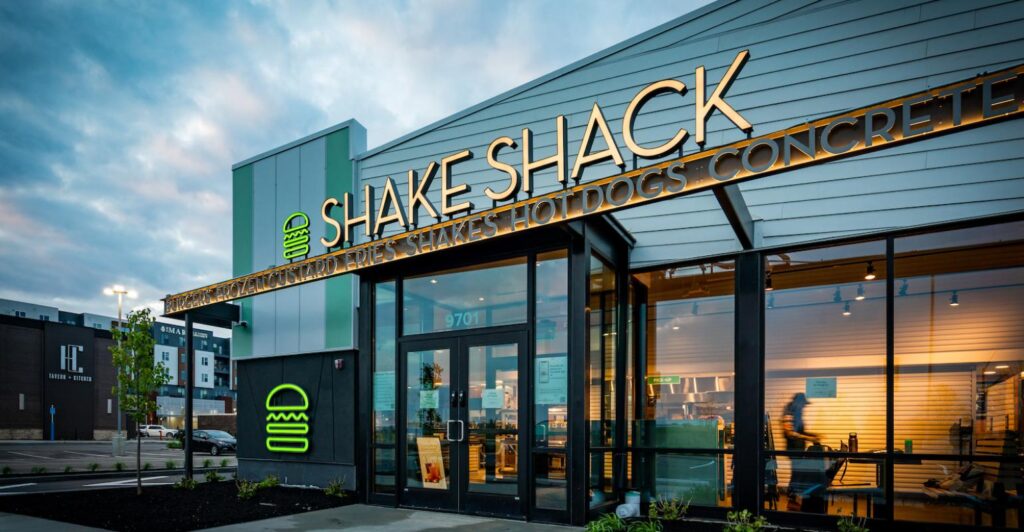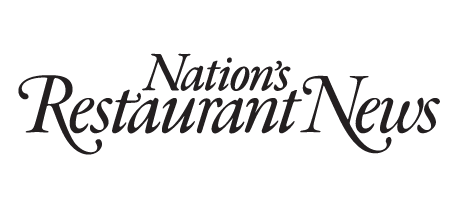Shake Shack sees growing potential in licensed restaurants
Same-store sales rose 10.3% for the quarter as customers return to in-restaurant dining
04 May 2023
Share this exclusive content from Saladplate

Photo courtesy of Shake Shack
Shake Shack had 449 restaurants on March 29, the last day of its first fiscal quarter of 2023.
Of those, 193 were licensed locations, accounting for 43% of all restaurants, and the New York City-bases fast-casual chain is bullish on growth of that segment of its business, both domestically at airports and roadside travel centers, and overseas.
“There’s a lot that’s probably underappreciated and undervalued about this part of the Shack story and our strategy,” CEO Randy Garutti told investors during a conference call on Thursday, noting that during the quarter six company-owned and seven licensed restaurants opened.
He said licensed partners had recently allowed Shake Shack to enter Israel, Canada, and Thailand, and existing businesses in China, Mexico, Singapore, and Japan continue to grow.
He said the brand would soon enter Malaysia, and he saw a future for “potential other markets in Southeast Asia.”
Sales at licensed locations grew by 33.4% in the quarter to $150.5 million, which is just over 38% of total systemwide sales of $394.7 million.
For the quarter, revenue exceeded the company’s expectations, having grown 24.5% to $253.3 million, of which $9 million came from licensing revenue. Same-store sales were up by 10.3%, compared to 5.1% in the fourth quarter of 2022. However the company booked a net loss of $1.5 million or 4 cents per share.
At company-owned locations, operating profit was up by 310 basis points to 18.3% compared to the first quarter of last year, and Garutti said they were expecting to hit 19% to 20% for the year, “and we see the opportunity to return to over 20%.” That was aided by the return of customers to restaurants, where traffic was up by double digits, chief financial officer Katie Fogertey said, noting that in-store sales are more profitable than off-premises sales.
Overall traffic was up by 4.8%
Getting customers to order through Shake Shack’s own channels, rather than via third-party delivery, also improves profitability, and the chain has helped drive that by charging more for third-party delivery as well as promoting in-app purchases by allowing early access to limited-time offers. Additionally, Fogertey said the goal to roll out kiosks to “nearly all Shakes by the end of 2023” is ahead of schedule.
“When a guest goes to our kiosks and they see the visual merchandising of our menu, we see that they have higher check than a traditional cashier order,” she said. “We see that they add on more premium and higher-margin items, and so that together really makes that our highest-margin channel.”
Shake Shack indexes toward higher-income customers, and Fogertey said they responded well to the 3.5% price increase that had been made in the quarter. They also responded well to the white truffle menu that was introduced in February, which included a burger with fontina cheese and white truffle sauce with a starting price of $8.99.
“White truffle was the most expensive LTO that we’ve ever launched and we’ve had very strong success with that,” she said.
She added that Shake Shack will take another 2% price increase toward the end of this quarter in response to rising costs.
Shake Shack is also innovating in shakes and other beverages with the nationwide rollout this week of dairy-free frozen custard. It also introduced a new veggie burger made with a proprietary blend of vegetables and grains including carrots, mushrooms, onions, quinoa, and farro.
Additionally, Garutti told investors that the chain would be launching caffeinated lemonades later in the current quarter.
Shake Shack is also working to control building costs, particularly with the more expensive drive-thru locations, of which 15 are expected to open this year.
“We are honing in on cost reduction elements of the design, we’re refining templates for efficient and more standardized operations,” he said, adding that management expects to reduce the cost of building drive-thrus by 10% this year compared to last year, “and in future years we’ll be rolling out new and tighter prototypes for drive-thru and core Shacks, focused on combining the great Shack experience we’re known for at a reduced cost and ability to scale.”
Management also provided earnings guidance for the rest of the years. It said it anticipated revenue of between $1.06 billion and $1.11 billion, an increase of between 18% and 23%.

Source: Nation’s Restaurant News



